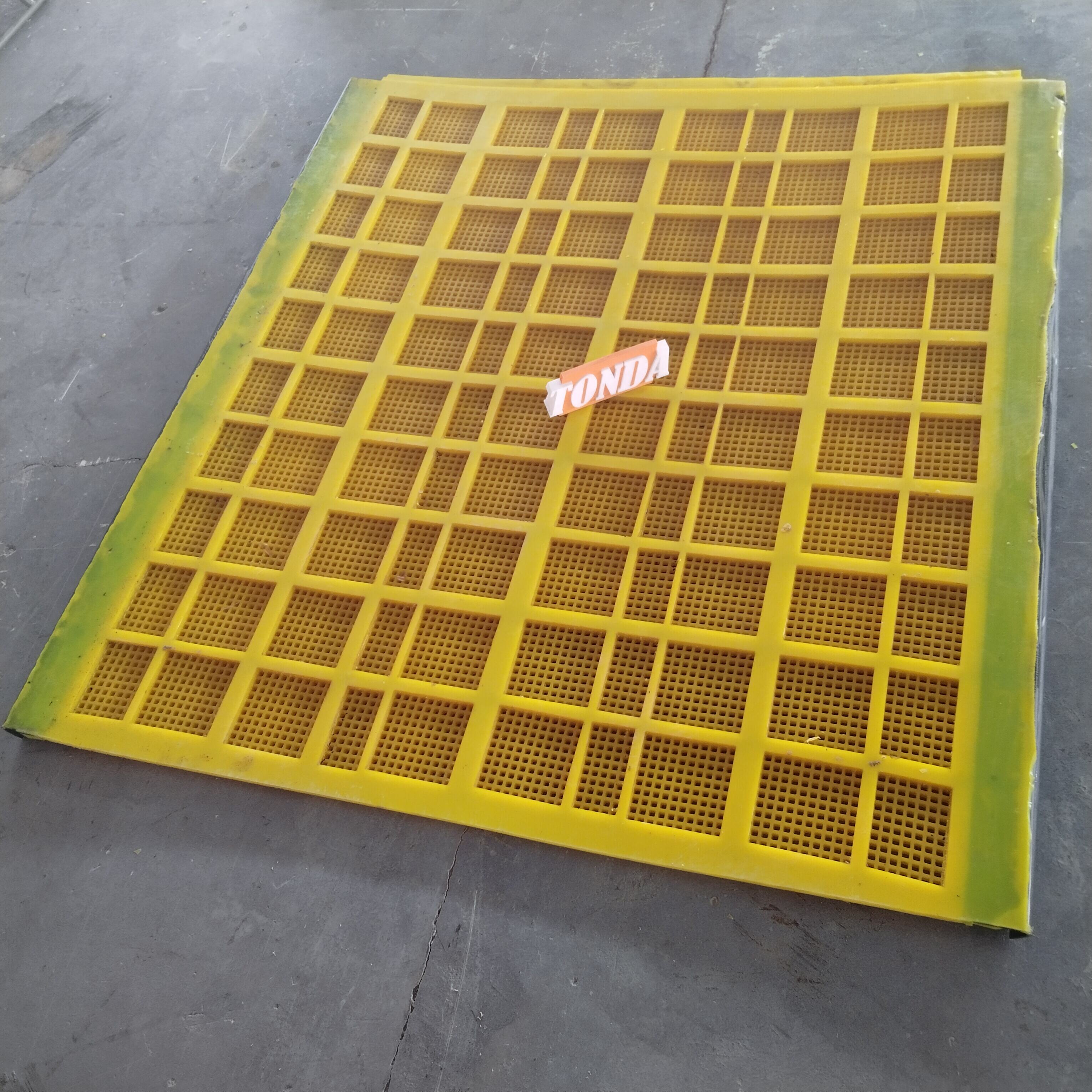Მატერიალური კომპოზიციის ანალიზი პოლიურეთანის ეკრანის ხარისხის კონტროლში
Პოლიმერის ხარისხის არჩევანის კრიტერიუმები ეკრანის სიმაგრისთვის
Პოლიმერის კლასის არჩევის პროცესში გარკვევა მნიშვნულოვნად განსხვავდება მაშინ, როდესაც საუბარი იმაზე მიდის, რომ პოლიურეთანის ეკრანები უფრო მეტი ხანი გაგრძელდეს. სხვადასხვა პოლიმერის კლასები გავლენას ახდენს მათ სიმაგრეზე დაჭიმულობის დროს, გაჭიმვაზე და გასატეხად სიმაგრეზე, ასევე გარემოს მოქმედების, მაგალითად სითბოსა და ტენიანობის მიმართ მათ გამძლეობაზე. მაგალითად, პოლიმერები, რომლებსაც უფრო მაღალი სიმაგრე ახასიათებთ დაჭიმვისას, უფრო კარგად გამძლე ხდის მათ მძიმე პირობებში, სადაც ჩვეულებრივი გახმარება უფრო სწრაფად ხდება. კვლევები აჩვენებს, რომ სწორად შერჩეული პოლიმერის კლასი შეიძლება ეკრანების საშუალოდ 30%-ით გააგრძელოს სიცოცხლის ხანგრძლივობა, რაც კი ნიშნავს ფულის დაბერვას შეცვლაზე მომდევნო დროს. უმეტესი მწარმოებლები ატარებენ სტანდარტული საინდუსტრიო მონაცემების შესაბამის ტესტებს, რათა დარწმუნდნენ, რომ არჩეული პოლიმერი შეესაბამება ხარისხის კონტროლის მოთხოვნებს.
[^1^]: პოლიმერული მასალების ჟურნალი, 2023
Დამატებების გავლენა ეკრანის მოქნილობაზე და ცვეთის წინაღობაზე
Პოლიურეთანის ეკრანების სიმკვრივესა და გამძლეობაზე მნიშვნელოვან გავლენას ახდენს სწორი ადიტივები. პლასტიფიკატორების, შევსებების და სტაბილიზატორების მსგავსი ადიტივები ირევა პოლიმერულ ბაზაში, რათა ეკრანები მოდუნდეს გატეხვის გარეშე, სხვადასხვა ინდუსტრიის საჭიროებების შესაბამისად. ზოგიერთი ტესტი აჩვენებს, რომ ადიტივების სწორი შემადგენლობა შეიძლება გააორმაგოს გახმარების წინაღობა, რაც ნიშნავს, რომ ასეთი ეკრანები გაცილებით მეტი დრო გრძელდება შეცვლამდე. ამ პროდუქტის წარმომქმნელი კომპანიებისთვის ადიტივების სრული ტესტირება აბსოლუტურად აუცილებელი ხდება. ისინი უნდა შეამოწმონ რომ არ დაემატოს არაფერი, რამაც შესაძლოა დროთა განმავლობაში მასალის სიმაგრე შეასუსტოს, ხოლო ამასთან შეასრულონ საშენი მოთხოვნები მძიმე პრომოშენში გამოყენებისთვის, სადაც მავნე შედეგების დაშვება შეუძლებელია.
[^2^]: ინდუსტრიული პოლიმერების ჟურნალი, 2023
Პოლიმერის ხარისხის არჩევანისა და დამატებების გავლენის გაგებით, მწარმოებლები შეძლებენ პოლიურეთანის ეკრანების ხარისხისა და მარაგის ვადის ოპტიმიზებას სხვადასხვა სექტორში, რაც საბოლოოდ გაუმჯობესებს მათ შესრულებას და სამსახურის ხანგრძლივობას.
Ხარისხის უზრუნველყოფის მანქანათმშენებლობის პროცესის შეფასება
Მაგიდის განზომილებითი სიზუსტისთვის კავითის სიზუსტის მოთხოვნები
Იმის გასაგებად, თუ როგორ უნდა მივიღოთ ზუსტი მოლდები დიზაინისა და წარმოების დროს, მნიშვნელოვანია მაღალი სიზუსტის დაცვა, რათა მივაღწიოთ პოლიურეთანის ეკრანების საჭირო განზომილებით მუშაობას. როდესაც მოლდები საკმარისად ზუსტად არ არის დამზადებული, რა ხდება? მაშინ პროდუქტის ერთგვაროვნება და საერთო ხარისხის კონტროლი სხვადასხვა პარტიების შემთხვევაში იკარგება. ჩვენ ვნახეთ რეალური წარმოებიდან, რომ მცირე შეცდომები მოლდის სიზუსტეში ზოგჯერ განზომილების პრობლემებს იწვევს 2%-ზე მეტი დაშვებით. ასეთი შეცდომის მაჩვენებელი მოწყობილობების შესრულებას საკმარისად ართულებს მათი სამსახურში გაშვების შემდეგ. მაშ რა უნდა გააკეთონ წარმოებას ამ საკითხზე? ბევრი გონივრული კომპანია მიმართულია უფრო ხარისხიანი მოლდის დამზადების ტექნოლოგიებისკენ, როგორიცაა CNC მანქანები, რათა მიიღონ მაღალი სიზუსტე. თუმცა, მოდით ვიყოთ პატიოსნები, ასეთი მეთოდების განხორციელება დროსა და ინვესტიციებში სჭირდება, რაც ბევრ პატარა ოპერაციებს უჭირს კონკურენტული ფასების შენარჩუნების დროს.
Გამაგრების პროცესის ოპტიმიზაცია გაუმჯობესებული სტრუქტურული მთლიანობისთვის
Ის თუ როგორ ხდება პოლიურეთანის მასალის გახივი წარმოების დროს, მნიშვნელოვან როლს თამაშობს იმ თვისებების განსაზღვრაში, რომლებითაც ის საბოლოოდ ხასიათდება. თუ გვინდა, რომ ეკრანებს მაღალი სიმაგრე და სწორი სიკონცხოება ჰქონდეთ წარმოების დასრულებისას, მნიშვნელოვანია გახივის დროისა და ტემპერატურის სწორი პროპორციის დაცვა. ზოგიერთი მრეწველობითი მონაცემი აჩვენებს, რომ როდესაც წარმომადგენლები ზუსტად უყურადღებენ გახივის პარამეტრებს, შესაძლოა სტრუქტურული მთლიანობა დაახლოებით 20 პროცენტით გაიზარდოს, რაც მასალის გამძლეობას ამაღლებს და ხანგრძლივობას უზრუნველყოფს დატვირთვის დროს. საწარმოს მენეჯერებმა კი უნდა უზრუნველყონ ამ პირობების მუდმივი კონტროლი და პატარა კორექტირებების შესრულება საჭიროების შემთხვევაში, რათა ყველა ნაწილი ერთნაირად მუშაობდეს და საიმედო შედეგს გასცეს.
Პროდუქტის ხარისხის კონტროლის ინსპექტირების პროტოკოლები წარმოების შემდეგ
Წარმოების შემდგომ ხარისხის კონტროლი ასრულებს მნიშვნელოვან როლს ნაკლოვანებების აღმოჩენაში და ყოველი პოლიურეთანის ეკრანის ხარისხის სტანდარტების დაცვაში. უმეტესი ქარხნები პროდუქტების შესამოწმებლად უბრალო მეთოდებს იყენებენ - ვიზუალურად ათვალიერებენ, ზუსტად აზომებენ განზომილებებს და ასრულებენ გამომდინარე პირობების იმიტაციურ ტესტებს. ქარხნები, რომლებიც სტატისტიკური პროცეს-კონტროლის მეთოდებს იყენებენ, მიახლოებით 15 პროცენტით ნაკლებ დეფექტს აღნიშნავენ, რაც კლიენტებისთვის შესამჩნევად და შეფასებულად იგრძნობა. საბოლოოდ კი საქმე საკმაოდ მარტივია; საწარმოები უნდა განაახლონ შემოწმების პროცედურები დროთა განმავლობაში. ინდუსტრიული ნორმები იცვლება, კლიენტების მოთხოვნები გადაინაცვლებს და არავინ უნდა დაეცინოს მოწინავე პროცედურების არ არსებობით, როდესაც კონკურენცია მარტივად ხელსაწყოდ არის.
Პოლიურეთანის ეკრანების შესრულების ტესტირების პარამეტრები
Ტვირთის მაჩვენებლის ტესტირების მეთოდები
Იმის გამო, რომ ტესტირების დატვირთვის ტევადობა გვეუბნება, ზუსტად რა წონა შეუძლია პოლიურეთანის ეკრანს გაუმკლავდეს გამტეხილის წინ, რაც პირდაპირ აისახება ამ ეკრანების წარმოებაზე, როდესაც ისინი რეალურ პირობებში გამოიყენებიან. უმეტესობა ადამიანის ტესტირება ხდება ეკრანზე წონის თანდათანობით გაზრდით, სანამ ის ბოლოს გასცემს, შემდეგ კი აღინიშნავს მაქსიმალური წონა მოხდა მას შემდეგ. კვლევები აჩვენებს, რომ ამ პროცესში ტესტერების ყურადღებით დამოკიდებულებით შედეგებში სინამდვილეში საკმარისად დიდი განსხვავება არსებობს - ზოგიერთი ტესტი აჩვენებს განსხვავებას დაახლოებით 10-დან 15 პროცენტამდე უყურადღებოდ ჩატარების შედების შედარებით. კარგი მონაცემების მისაღებად საჭიროა ლაბორატორიული პირობების შექმნა, რომელიც ახლოს არის იმ პირობებთან, რაც ვარჯიშში ხდება, ასე რომ ჩვენ ზუსტად ვიცით, რომ ეს ეკრანები არ გატეხება წნევის ქვეშ, როდესაც ისინი საჭიროა მათი დანიშნულების მიხედვით.
Აბრაზიული მედეგობის შეფასების სტანდარტები
Იმის განხილვა, თუ რამდენად კარგად ეწინააღმდება რაიმე გახსნის შესახებ ინფორმაციას აძლევს პოლიურეთანის ეკრანების სიცოცხლის ხანგრძლივობის შესახებ, განსაკუთრებით იმ ადგილებში, სადაც ისინი ყოველდღიურად დატვირთულნი არიან. უმეტესობა ბიზნესში იყენებს ტაბერის მეთოდის ტესტებს, სადაც ნიმუშები სინამდვილეში იხახუნება სხვადასხვა ნივთებს სანამ ისინი განადგურდებიან, რაც იმას გვაჩვენებს, თუ რა დატვირთვას უძლებს მასალა. ველის მონაცემების მიხედვით, ეკრანები, რომლებიც აჩვენებენ დაბალ გახსნის მაჩვენებლებს, საშუალოდ 25%-ით გრძელ ვადას უზრუნველყოფს სანამ ისინი შეცვლის საჭიროებას განიცდიან, რაც ნიშნავს მენეჯერებისთვის ნაკლებ პრობლემას დამოკიდებულებით დამოკიდებულების შესახებ. პროდუქტების ამ კომპანიებისთვის ასტმ მითითებების მკაცრად მიმდევრობა განაპირობს შედეგების ერთგვაროვნებას და უკეთეს შესრულებას დროის განმავლობაში. საბოლოოდ, არავინ სურს რაიმე გაყიდვა, რაც ძალიან სწრაფად იშლება.
Წრფივი გამტარი საფილტრაციო ეკრანის თავსებადობის შეფასება
Მნიშვნელოვანია შეამოწმოთ, თუ როგორ ურთიერთქმედებენ ერთმანეთთან წრფივი გადახრის საცერი მანქანები, რათა დაუშვით პოლიურეთანის საცერი მანქანების სწორად მუშაობა სხვადასხვა ტიპის მოწყობილობებზე. ასეთი შემოწმების დროს უნდა გაიგეთ რხევის სიხშირე და უნდა გაიზომოთ ამ რხევის სიმძლავრეც. ასეთი ტესტირების გაკეთების გარეშე ხდება პრობლემები. ჩვენ ვნახეთ შემთხვევები, სადაც საცერი მანქანები უბრალოდ ვერ შეესწავთ გარკვეული მანქანებისთვის, რის გამოც ისინი სწრაფად ისვენებენ ან ვერ ასრულებენ მასალების დამუშაობას როგორც საჭიროა, რაც კი ანელებს პროდუქციის გაკეთების პროცესს. დაუთმენით დრო იმ სპეციფიკაციების შედარებას, რომლებიც მითითებულია საცერი მანქანებისა და მოწყობილობების ინსტრუქციებში დაყენებამდე. ეს მარტივი ნაბიჯი დიდ განსხვავებას ქმნის ყოველდღიურ ოპერაციებში, ხორციელდება ხარჯების დაზოგვა და გარკვეული დროის განმავლობაში არ მოხდება საცერი მანქანების ხშირი შეცვლა.
Სერტიფიკაცია და ინდუსტრიის შესაბამისობის შემოწმება
ISO 9001 ხარისხის მენეჯმენტის მოთხოვნების განმარტება
ISO 9001 სტანდარტი უზრუნველყოფს ორგანიზაციებს ხარისხის მართვის სახელმძღვანელოებით, რათა მუდმივად შეასრულონ როგორც მომხმარებლის მოლოდინები, ასევე კანონიერი მოთხოვნები. როდესაც კომპანიები გაიგებენ, თუ როგორ მუშაობს ISO 9001 და განხორციელებაში მოჰყავთ, ხშირად აღიარებენ გაუმჯობესებას რამდენიმე სფეროში. პროცესები უფრო გლუვად მიმდინარეობს, მომხმარებლები აღნიშნავენ უფრო მაღალ დასაბუთებულობას, ხოლო პროდუქცია კი საერთო ხარისხით გამოდის. კვლევები აჩვენებს, რომ ფირმებს, რომლებსაც აქვთ ISO 9001 სერტიფიკატი, ხშირად გააჩნიათ გაყიდვების დაახლოებით 20%-იანი ზრდა მომხმარებლებისა და პარტნიორების ნდობის გამო. შესაბამისობის შენარჩუნება მოითხოვს მუდმივ თანამშრომლების სწავლებას და წელზე განკუთვნილ შიდა აუდიტებს. ამ აქტივობების საშუალებით კი არა მხოლოდ სტანდარტების შენარჩუნება ხდება, არამედ იქმნება სამუშაო გარემო, სადაც ხარისხის საკითხები ყოველდღიურ საქმიანობაშია ჩამატებული. ბევრმა მწარმოებელმა კომპანიამ შენიშნა, რომ ISO 9001-ის მიღებამ გამოიწვია ეფექტურობის გრძელვადიანი მოგება და დაამყარა თავი როგორც სანდო მოთამაშე კონკურენტულ ბაზარზე.
Სამრეწველო სტანდარტების შესაბამისობის მოთხოვნები სკრინინგის აპლიკაციებისთვის
Პოლიურეთანის ეკრანების გამოყენებისას ოპერაციების დროს სხვადასხვა ინდუსტრიას თავისი წესები ჰყავს. ANSI და OSHA-ს მსგავსი ჯგუფები ქმნიან სტანდარტებს, რომლებიც მუშათა უსაფრთხოების დაცვას უზრუნველყოფს და აუცილებლობას უტაცის მოწყობილობების სწორ მუშაობას ადგილმდებარეობის გათვალისწინებით. მიიღეთ სტანდარტი ASTM D4060, რომელიც კონკრეტულად მიმართულია მასალების გახმარების წინააღმდეგ წინააღმდეგობის გასაზომად. ეს სტანდარტი მნიშვნელოვან როლს თამაშობს კომპანიებისთვის, რომლებიც მაინებში ან აგრეგატების მომზადების ადგილებში მუშაობენ, ვინაიდან ასეთი გარემო მოწყობილობებისთვის საკმარისად მძიმეა. კომპანიებისთვის საჭიროა უსაფრთხოების მოთხოვნებთან შესაბამისობის შესახებ დოკუმენტაციის წარმოებაც და მუდმივი შემოწმებების ჩატარება, რათა დაცული იყოს კანონიერი მოთხოვნები და თავიდან იქნას აცილებული ჯარიმები. ამ სტანდარტების დაცვა კი არა მარტო სამართლიანი პრობლემების თავიდან ასაცილებლადაა საჭირო, არამედ პრაქტიკულად ასევე გამართულია. როდესაც კომპანიები ამ სტანდარტების მიხედვით მუშაობენ, ისინი ყოველდღიურად უფრო გლუვად მუშაობენ უცხადი გამტეხვების გარეშე, რაც საბოლოოდ უზრუნველყოფს მომხმარებელთა ნდობას, რომლებიც ერთგვაროვანი ხარისხის პროდუქტს უპირატესობას აძლევენ.

